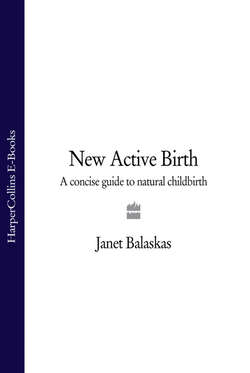Читать книгу New Active Birth: A Concise Guide to Natural Childbirth - Janet Balaskas - Страница 33
2 Breathing (Basic I)*
ОглавлениеIn the basic sitting position, with your awareness still focused on the breath, begin to pay special attention to the out-breath. Normally we breathe in and out through the nose but, for now, allow yourself to exhale very slowly through the mouth. When you reach the very end of the out-breath, pause for a moment or two. Then inhale through the nose to gently fill the empty space created by the exhalation.
Continue breathing like this for a few moments, keeping your body completely relaxed. Allow the breath to simply flow at its own pace. The exhalation should be approximately twice as long as the inhalation.
Continuing to breathe deeply, out through the mouth and in through the nose, bring your awareness down to the lower belly. See if you can feel the gentle movement of the belly with the breath. As you exhale, pressure in the abdomen decreases and your belly should move away from your hands towards your spine. Pause. Then as the breath comes in, pressure in the abdomen increases and your belly should expand towards your hands.
Continue breathing like this, feeling the belly withdraw away from your hands with each exhalation and expand gently towards your hands, as the breath comes in.
The rest of your body should remain relaxed and still, with very little movement in the chest and shoulders.
When you breathe deeply you are mainly using your diaphragm muscle which moves up as you exhale and down as you inhale, creating the fluctuating pressure in the belly. When we are relaxed we naturally breathe abdominally. However, when we become tense or anxious our breathing usually rises and becomes shallow, with most of the movement happening in the chest rather than the belly, and the emphasis on the inhalation rather than the exhalation (see Chapter 4).
Many of us, without knowing it, breathe habitually into the chest rather than the belly. If this is the case, keep focusing on the out-breath and try exaggerating the movement of the belly a little, actually drawing the abdominal muscles away from your hands as you exhale, then release them towards your hands when you inhale. With a little practice, this movement should become automatic and quite natural as your breathing deepens.
Breathing with sounds will help to lengthen and deepen your exhalation. After a while deep breathing becomes effortless and can be used while practising your exercises as well as during contractions in labour. When contractions intensify, releasing sound with the out-breath will help to release the pain.
